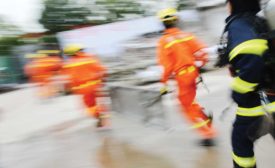Home » accident prevention
Articles Tagged with ''accident prevention''
A Confined Space blog post
Blame the worker — The error of blaming incidents on “human error”
July 3, 2017
A NIOSH Science Blog post
Ladder safety in the wholesale and retail trade sector
Take the right steps towards safety
July 3, 2017
LEVEL-EZE Automatic Ladder Levelers by Jershon Inc.
A proven concept in ladder safety
June 29, 2017
Never miss the latest news and trends driving the safety industry
eNewsletter | Website | eMagazine
JOIN TODAYCopyright ©2024. All Rights Reserved BNP Media.
Design, CMS, Hosting & Web Development :: ePublishing








